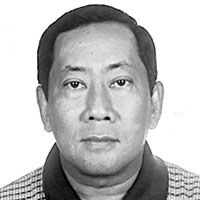Finding ways to solve Cebu’s water crisis

While Cebu has its never ending traffic problems, its constant water crisis and a serious lack of infrastructure, suddenly the haze purportedly coming from the forest fires in Indonesia has now entered its second week where the public has been advised to take precautionary measures like staying indoors, avoiding outdoor activities, and wearing face masks. I further learned that Particulate Matter (PM) 2.5 test results showed 56 micrograms per standard cubic meter. EMB 7 chief Cindylyn Ochea said the result was above the safe value of 50 micrograms per average cubic meter.
The EMB 7 still has to know how long the haze in Cebu has been in the atmosphere. “We are still tracking the trend based on the results. There are various meteorological factors that could affect its concentration in the air. First is the rain, which could wash it away. Others include wind direction and wind speed.” Meanwhile, the Department of Health (DOH) warns that the haze may increase the risk of other respiratory illnesses.
We also gathered that the haze from Indonesia’s forest fires also reached the Davao region, Soccsksargen, Bacolod, Iloilo, Puerto Princesa, Dumaguete, Zamboanga, Tagum City and Koronadal City. When I flew to Manila last Thursday, it was the first time for me to view the haze from 15,000 feet as the plane flew to its desired altitude. So it is not only affecting us in the Visayas, but also Mindanao.
* * *
It was only a week ago when the Cebu media were invited to a power lunch hosted by Visayan Electric formerly called VECO where we also met the top officials of the newest and fifth member of the Aboitiz Group called Aboitiz InfraCapital headed by CEO Cosette Canilao and Apo Agua CEO Roman Azanza III. This time, Aboitiz InfraCapital hosted the luncheon with the Cebu media to focus on one major issue – finding solutions to the water problems that Cebu has for decades.
While I submit that the people in Metro Manila too have water problems, however they do have the Angat Dam, La Mesa Dam, the Magat Dam or Ambuklao Dam that when summer comes and the rains stop falling and their water levels go down to critical level, these are brought to the public’s attention to conserve water and do what they need to do.
But in Cebu since we only have the Buhisan Dam as our surface water which only gives us 8,000 cubic meters of water, the only time we panic is when the water that we get from underground wells starts to dry up and only then do we complain that we are having a water crisis.
Of course when summer is over and we get a lot of tropical storms we no longer feel or believe that we are still in the midst of a water crisis. But like it or not, this is the very reason why our water crisis has never left us for decades because we have not found a more permanent solution to our water crisis.
But a report from the Freeman mentioned that Cebu City Mayor Edgardo Labella said, “It has come to my knowledge that the Metro Cebu Water District (MCWD) is currently entertaining a proposal to supply about 100 million liters per day from a desalination plant to be constructed by a consortium between the Aboitiz Group and the Metro Pacific Group of Companies.” Of course I fully understand the concerns of Mayor Labella if and when MCWD gets water from a desalinated water plant.
However in last Tuesday’s meeting with Aboitiz InfraCapital, the Managa Dam project was mentioned.
Meanwhile we also learned from MCWD that it has no agreement or contract with the consortium or any party in relation to a bulk supply of 100 million liters per day of desalinated seawater. But Aboitiz InfraCapital CEO Cosette Canilao talked about a Starbucks Coffeeshop in Metro Manila that had to closed shop because it had no water. Indeed with a desalination plant, at least there is water… but at a higher cost.
At this point I would like to emphasize to the 18th Congress the need to rexamine our law, also known as “The Provincial Water Utilities Act of 1973,” which was signed into law on May 25, 1973 by then Pres. Ferdinand E. Marcos under Presidential Decree No.198. It is the law that created the LWUA in the national level also provided for the establishment of Water Districts in provincial cities and municipalities. Mind you this law orders all water districts to give only potable water to all water consumers.
But this was okay way back in 1973. However today is a totally different situation. Consumers no longer trust the quality of water in our water districts to a point that even in depressed areas, they drink water from ATM machines or Automatic Tubig Machines. So people are flushing toilets, washing their cars, when this can be done with a non-potable water.
* * *
Email: [email protected] or [email protected]
- Latest
- Trending























